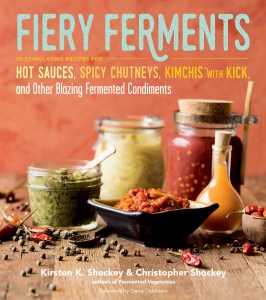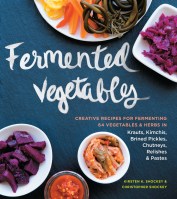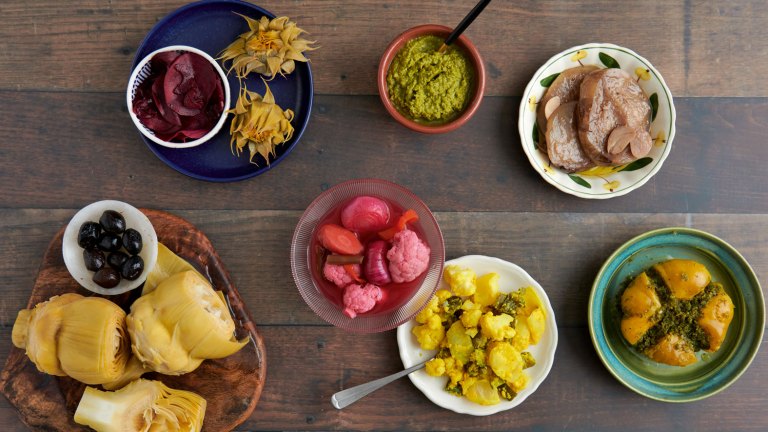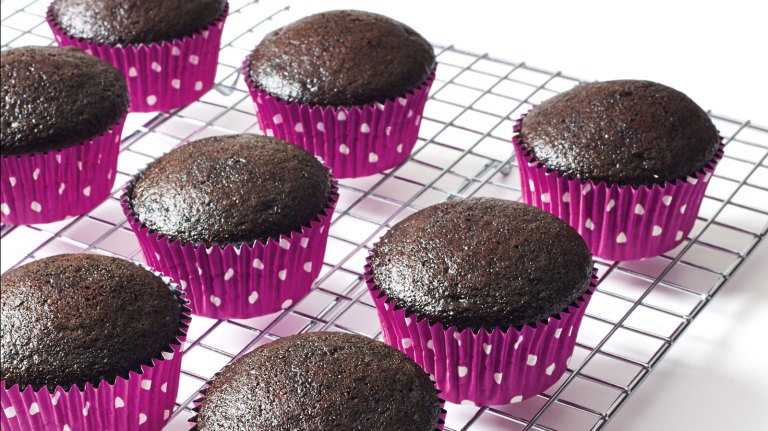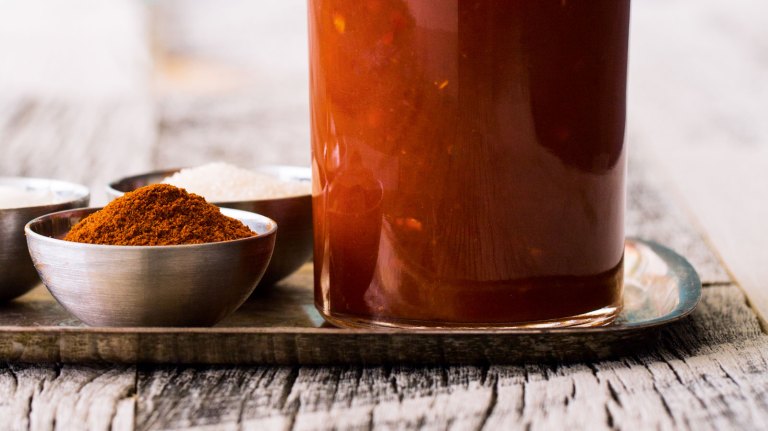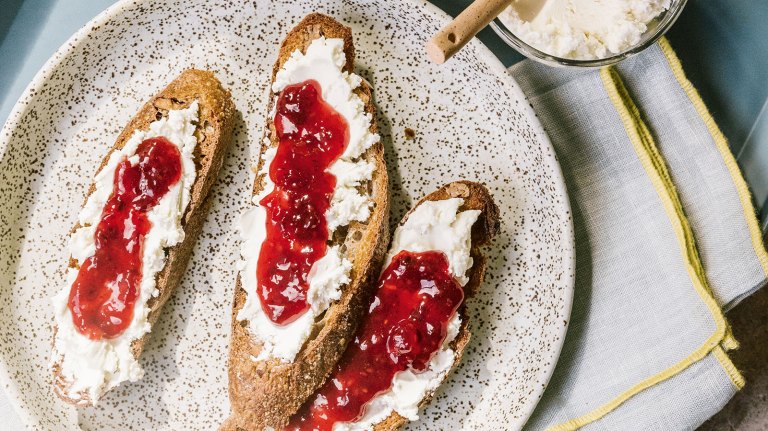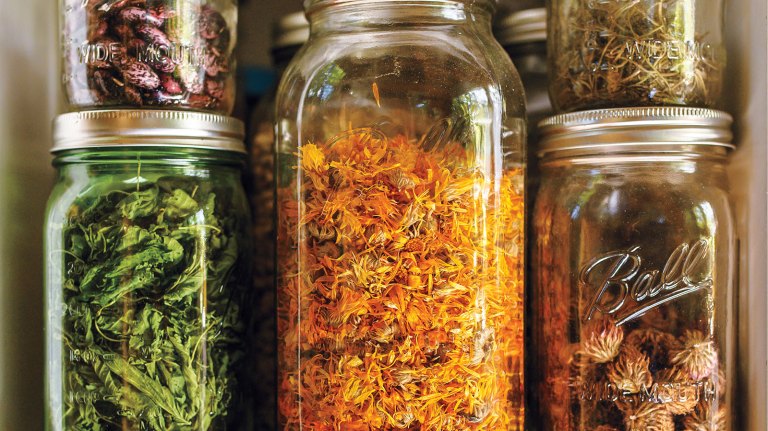How to Make Zhug, a Yemeni Chile Paste, with a Fermented Twist (VIDEO)
This fermented take on a traditional cilantro-and-green-chile hot sauce delivers plenty of flavor and heat, with an added probiotic punch.
Cultures around the world have long used pastes as the starting flavor or the final touch in many meals. Think of curry paste in hot oil to get things started, or pesto dolloped on top of a pasta dish. Often pastes function as a seasoning base on which to build a meal, but they can also be used as condiments. Many of these pastes are spicy. These types of ferments have become a convenience food for our family and are very useful to have on hand in the refrigerator.
Often the pastes rely on dried spices with only a few wet ingredients. While the rules and techniques of lacto-fermentation remain the same, these ferments tend to feel just barely moist enough to create brine. We have found that we have much greater success with this type of ferment if, when tucking in the ferment, we cartouche it. Great word, right?
Isn’t a cartouche the Egyptian oval that encloses the name of royalty? It is, but in cooking terms it is a round piece of parchment paper placed on the surface of food, often under a saucepan lid to reduce evaporation. In the case of fermented pastes, we use a cartouche to reduce evaporation as well as air exposure. It can take many forms:
- A cabbage leaf, grape leaf, horseradish leaf, or other vegetable leaf
- A circular piece of parchment paper cut to fit the surface of your ferment
- A piece of plastic cut from a ziplock bag (more inert than plastic wrap)
- A small circle cut out of a silicone mat (reusable)
While plastic is the most accessible material to use, we have read conflicting information about its safety. Whether or not to use it is, we think, a matter of personal preference.
It’s important to remember that paste ferments don’t usually show a lot of (if any) activity in the way a juicy batch of pepper mash might, but things are happening. This is because a lot of the paste ingredients, like the herbs, just don’t have the high-carb content that excites the lactobacilli. When you are used to active ferments, this inactivity can make it seem like the fermentation isn’t working. Don’t worry, it is. Watch for other signs of doneness — a change in color, a slight acidic smell, a well-balanced flavor — and if you are unsure, use a pH strip.
This is our fermented version of a classic Yemeni chile paste. This paste has a rich flavor, as the cilantro and garlic do not get drowned out by the heat. Zhug (or zhoug, or skhug) traveled from Yemen to Israel and is a common sight on Israeli food carts, where you might spoon it onto shwarma or falafel sandwiches. It is wonderful in hummus, and we have used it for flavoring many spreads and salads. We recommend it on the table as a condiment for almost any type of dish.
Zhug (Skhug)
Yield: About 1 pint
Heat Index: 3
Ingredients
- 12 large serrano peppers (about ½ pound), stemmed and seeded
- 2 bunches cilantro
- ½ bunch parsley
- 12 cloves garlic
- 1 teaspoon freshly ground black pepper
- 1 teaspoon coriander seeds, toasted and ground
- 1 teaspoon cumin seeds, toasted and ground
- ¼ teaspoon ground cardamom
- 2 tablespoons fresh lemon juice
- 1 teaspoon salt
Directions
Combine the serranos, cilantro, parsley, garlic, black pepper, coriander seed, cumin seed, cardamom, and lemon juice in a food processor and process to a paste consistency. Sprinkle in the salt. The paste will become moist right away and will look juicier than some pastes.
Pack the paste into a jar that is just the right size for your ferment, pressing out any air pockets as you go. Leave about 1 inch of headspace.
Press a piece of plastic (or other cartouche) against the surface of the ferment, being careful not to trap any air beneath it. Screw the lid down tightly.
Set the jar in a corner of the kitchen to ferment, and watch for air pockets forming in the paste. If you see any, open the lid and press the paste back down. If the lid starts to bulge, simply open it for a moment to burp the ferment.
Allow to ferment for at least 5 to 7 days. (We have allowed zhug to ferment for 3 weeks, and it was delicious.) You will know it is ready when the verdant green mixture becomes a dull olive color and the brine layer on top is a cloudy green. It will smell of cilantro and salsa, with a pickled edge. The flavors will have mingled and taken on a strong garlicky pickled-cilantro heat.
When it is ready, place a clean small round of plastic or parchment paper directly on top of the paste. Tighten the lid, then store in the fridge, where it will keep for up to 8 months.
NOTE:
When you taste-test a paste, be aware that it will be somewhat saltier than some of the other vegetable ferments, because it’s meant to be a concentrate, like bouillon.
